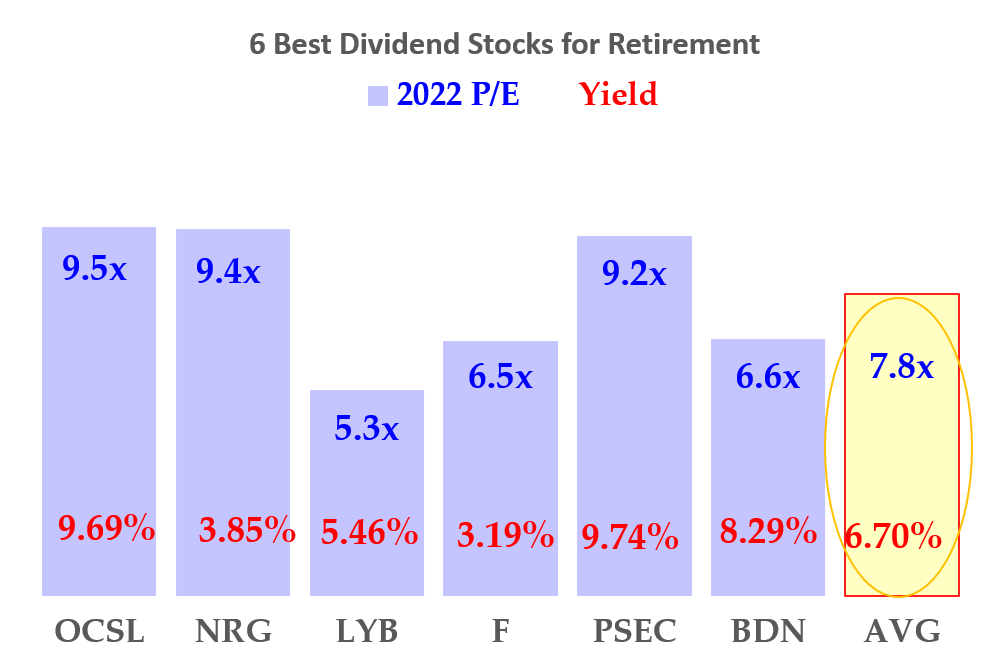
Alert securities will help you keep up to date with stock prices. These systems send you notifications when a stock or ETF goes up or down by a certain percentage. These systems can also help you understand the context of a stock's movement and identify patterns after certain events. These alerts are common. These systems can save you time and money.
Normal, non-malicious activities can trigger alerts
An Alert is an alert that is sent to you when there is suspicious activity. It's a sign that a security issue is being investigated. An Alert is usually activated by a security device detecting a possible threat actor. Once an Alert is triggered it is triaged and the appropriate action taken to stop the attack, de-escalate it, or make it an Incident or False Positive.
Analyzing alerts involves relating an event to a preprogrammed warning rule. The programmatic correlation logic generates alarms. After that, the event is investigated to determine whether it is a False Positve or an Incident. Sometimes incidents can be resolved using a formal Incident Respond Process. Alternately, alerts can be enhanced through queries against additional event source or historical data stored in a Data Lake.

Alert levels
The Securities and Exchange Commission, (SEC), has published several Investor Alerts that help investors to determine when to buy and sell securities. These alerts are based on trends or recent events. Digital currency is the focus of the latest investor alert. This alert warns investors that speculation trading in Bitcoin can pose significant risks.
Investors can set up alerts to inform them when a stock, ETF, or other investment moves a specific percentage. This helps investors identify large market moves, to place them in context, as well as recognize patterns and trends that occur after specific events.
Alert types
There are two basic types if alerts for securities. The first is a basic alert that uses a single variable. The second type uses an intermediate criterion based on a change in a predetermined value. They are both similar in that they notify you if the security's price rises or falls.
You can also set alerts for particular prices. An alert can be set up to notify you when a certain stock, ETF, bond, or other financial instrument goes up or falls by a specified percentage. These alerts help you identify big moves and put the price into context. You may also find patterns in the wake of certain events.

Alert levels graphs
Developing alert levels is a complex task and requires collaboration between a wide range of stakeholders. The system must be transparent, based on sound public health principles, and must be able to incorporate new evidence as the risk level changes. Alert levels must always be simple to understand and communication should be fast and easy, via mass media and social media.
Alert levels are determined by a number of factors, including the level volatility and the risk level. These indicators are considered in the context of other data and indicators. The indicators should not be difficult to quantify and the user should be able to adjust the thresholds. In the case of security, however, the thresholds as well as the level of risk can not be completely automated. You should also allow for flexibility if you plan on changing security regularly.
Alert user name
There are several ways to customize the user name and email address in your Alert. For example, you can associate a user's email with their phone number. You can also control which types of alerts they receive. For example, if you have an email account and a mobile phone, you can choose to have alerts sent to both devices.
FAQ
What is the difference in the stock and securities markets?
The entire market for securities refers to all companies that are listed on an exchange that allows trading shares. This includes stocks as well options, futures and other financial instruments. Stock markets are usually divided into two categories: primary and secondary. Stock markets are divided into two categories: primary and secondary. Secondary stock markets allow investors to trade privately on smaller exchanges. These include OTC Bulletin Board Over-the-Counter, Pink Sheets, Nasdaq SmalCap Market.
Stock markets are important as they allow people to trade shares of businesses and buy or sell them. It is the share price that determines their value. A company issues new shares to the public whenever it goes public. Investors who purchase these newly issued shares receive dividends. Dividends refer to payments made by corporations for shareholders.
Stock markets not only provide a marketplace for buyers and sellers but also act as a tool to promote corporate governance. Boards of directors are elected by shareholders to oversee management. They ensure managers adhere to ethical business practices. The government can replace a board that fails to fulfill this role if it is not performing.
Why is a stock security?
Security refers to an investment instrument whose price is dependent on another company. It can be issued as a share, bond, or other investment instrument. If the asset's value falls, the issuer will pay shareholders dividends, repay creditors' debts, or return capital.
How can people lose their money in the stock exchange?
The stock exchange is not a place you can make money selling high and buying cheap. It's a place where you lose money by buying high and selling low.
Stock market is a place for those who are willing and able to take risks. They are willing to sell stocks when they believe they are too expensive and buy stocks at a price they don't think is fair.
They hope to gain from the ups and downs of the market. They could lose their entire investment if they fail to be vigilant.
What are the advantages of investing through a mutual fund?
-
Low cost – buying shares directly from companies is costly. Purchase of shares through a mutual funds is more affordable.
-
Diversification - most mutual funds contain a variety of different securities. One type of security will lose value while others will increase in value.
-
Professional management - professional mangers ensure that the fund only holds securities that are compatible with its objectives.
-
Liquidity is a mutual fund that gives you quick access to cash. You can withdraw the money whenever and wherever you want.
-
Tax efficiency – mutual funds are tax efficient. Because mutual funds are tax efficient, you don’t have to worry much about capital gains or loss until you decide to sell your shares.
-
There are no transaction fees - there are no commissions for selling or buying shares.
-
Mutual funds are simple to use. You will need a bank accounts and some cash.
-
Flexibility: You can easily change your holdings without incurring additional charges.
-
Access to information - you can check out what is happening inside the fund and how well it performs.
-
Ask questions and get answers from fund managers about investment advice.
-
Security - You know exactly what type of security you have.
-
You can take control of the fund's investment decisions.
-
Portfolio tracking: You can track your portfolio's performance over time.
-
Ease of withdrawal - you can easily take money out of the fund.
There are some disadvantages to investing in mutual funds
-
Limited investment options - Not all possible investment opportunities are available in a mutual fund.
-
High expense ratio. The expenses associated with owning mutual fund shares include brokerage fees, administrative costs, and operating charges. These expenses will reduce your returns.
-
Lack of liquidity - many mutual fund do not accept deposits. They can only be bought with cash. This limits the amount of money you can invest.
-
Poor customer service - there is no single contact point for customers to complain about problems with a mutual fund. Instead, you need to contact the fund's brokers, salespeople, and administrators.
-
Risky - if the fund becomes insolvent, you could lose everything.
Why are marketable securities important?
A company that invests in investments is primarily designed to make investors money. It does this through investing its assets in various financial instruments such bonds, stocks, and other securities. These securities have attractive characteristics that investors will find appealing. These securities may be considered safe as they are backed fully by the faith and credit of their issuer. They pay dividends, interest or both and offer growth potential and/or tax advantages.
What security is considered "marketable" is the most important characteristic. This refers to how easily the security can be traded on the stock exchange. You cannot buy and sell securities that aren't marketable freely. Instead, you must have them purchased through a broker who charges a commission.
Marketable securities can be government or corporate bonds, preferred and common stocks as well as convertible debentures, convertible and ordinary debentures, unit and real estate trusts, money markets funds and exchange traded funds.
These securities are often invested by investment companies because they have higher profits than investing in more risky securities, such as shares (equities).
Statistics
- Individuals with very limited financial experience are either terrified by horror stories of average investors losing 50% of their portfolio value or are beguiled by "hot tips" that bear the promise of huge rewards but seldom pay off. (investopedia.com)
- Ratchet down that 10% if you don't yet have a healthy emergency fund and 10% to 15% of your income funneled into a retirement savings account. (nerdwallet.com)
- US resident who opens a new IBKR Pro individual or joint account receives a 0.25% rate reduction on margin loans. (nerdwallet.com)
- Even if you find talent for trading stocks, allocating more than 10% of your portfolio to an individual stock can expose your savings to too much volatility. (nerdwallet.com)
External Links
How To
How to trade in the Stock Market
Stock trading involves the purchase and sale of stocks, bonds, commodities or currencies as well as derivatives. Trading is French for traiteur. This means that one buys and sellers. Traders purchase and sell securities in order make money from the difference between what is paid and what they get. It is one of oldest forms of financial investing.
There are many different ways to invest on the stock market. There are three main types of investing: active, passive, and hybrid. Passive investors do nothing except watch their investments grow while actively traded investors try to pick winning companies and profit from them. Hybrid investors use a combination of these two approaches.
Passive investing is done through index funds that track broad indices like the S&P 500 or Dow Jones Industrial Average, etc. This strategy is extremely popular since it allows you to reap all the benefits of diversification while not having to take on the risk. You can just relax and let your investments do the work.
Active investing involves picking specific companies and analyzing their performance. Active investors look at earnings growth, return-on-equity, debt ratios P/E ratios cash flow, book price, dividend payout, management team, history of share prices, etc. They decide whether or not they want to invest in shares of the company. If they believe that the company has a low value, they will invest in shares to increase the price. On the other side, if the company is valued too high, they will wait until it drops before buying shares.
Hybrid investing combines some aspects of both passive and active investing. You might choose a fund that tracks multiple stocks but also wish to pick several companies. You would then put a portion of your portfolio in a passively managed fund, and another part in a group of actively managed funds.